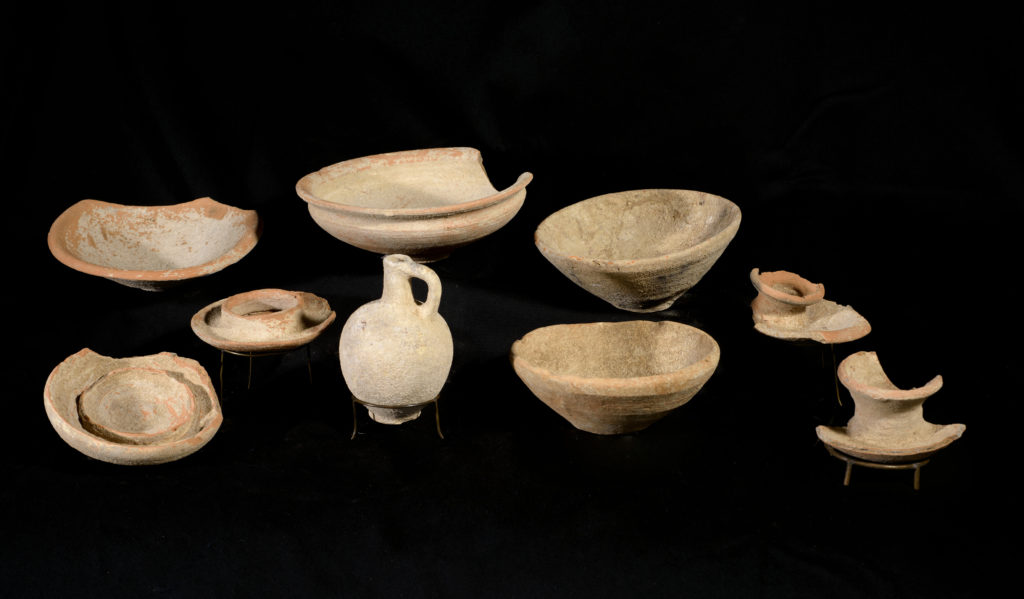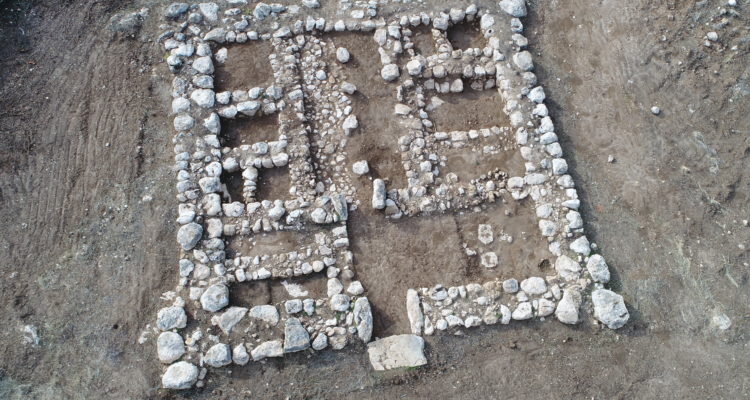“The fortress we found provides a glimpse into the geopolitical reality described in the Book of Judges, in which the Canaanites, Israelites and Philistines are fighting each other,” the archaeologists said.
By World Israel News Staff
A Canaanite fortress from the middle of the 12 century BCE, the period of the biblical judges, was found by the Israel Antiquities Authority and teenage volunteers in an excavation close to Kibbutz Galon, near Kiryat Gat, the Israel Government Press Office announced in a press release. The site is now being opened for the public free of charge, in collaboration between the Israel Antiquities Authority (IAA) and the Jewish National Fund (KKL).
According to archaeologists Saar Ganor and Itamar Weissbein of the IAA, “The fortress we found provides a glimpse into the geopolitical reality described in the Book of Judges, in which the Canaanites, Israelites and Philistines are fighting each other. In this period, the land of Canaan was ruled by the Egyptians, and its inhabitants were under their custody. Then, during the 12th century BCE, two new players entered the game: the Israelites and the Philistines. This led to a series of violent territorial disputes,” the archaeologists said.
“The Israelites settled in non-fortified settlements at the Benjamin and Judean Mountains,” they continued. “Meanwhile, the Philistines accumulated power in the Southern Coastal Plain and established big cities such as Ashkelon, Ashdod and Gat. In an attempt to conquer more areas, the Philistines confronted the Egyptians and the Canaanites on the border line, which probably passed at the Guvrin river, between the Philistine kingdom of Gat and the Canaanite kingdom of Lachish.”
“It seems that Galon fortress was built as a Canaanite/Egyptian attempt to cope with the new geopolitical situation,” they explained. “However, in the middle of the 12 century B.C. the Egyptians left the land of Canaan and returned to Egypt. Their departure led to the destruction of the unprotected Canaanite cities – a destruction that was probably led by the Philistines.”
According to Ganor and Weissbein, “The stories of the judges in the bible demonstrate clearly the complicated geopolitical reality and the struggle for the control of territories during the establishment of new political powers in the land of Israel. The fortress structure, called Egyptian ‘governor houses,’ is known from other sites excavated in Israel. The fortress was built in a strategic location, from which it is possible to watch the main road that went along the Guvrin River – a road connecting the coastal plain to the Judean plains.”
The size of the fortress is 18 meters (59 feet) by 18 meters, and watch towers were built in the four corners. A massive threshold, carved form one rock weighing around three tons, was preserved at the entrance of the building.

3,200-year-old pottery vessels found in the fortress. (Dafna Gazit/Israel Antiquities Authority)
Inside the fortress was a courtyard paved with stone slabs and columns in the middle. Rooms were constructed at both sides of the courtyard. Hundreds of pottery vessels, some still whole, were found in the rooms of the fortress, including special vessels that were probably used for religious ritual. A large number of bowls was also found in the rooms, some of which were made in a style copying Egyptian bowls.
The remains of the fortress were uncovered with the help of students from the Israel Studies department at the Multidisciplinary School in Be’er Sheva, from the Nachshon pre-military preparatory program in the Negev and others. This was done as part of the Israel Antiquities Authority’s policy to bring the general public, and especially the young generation, closer to archaeology.
According to Talila Lifshitz, director of the Community and Forest department of the Jewish National Fund, “Galon fortress provides a fascinating glimpse into the story of a relatively unknown period in the history of the country.”
The official opening of the site for the public will take place this week on Tuesday. A picnic area and some explanatory signs were set up to enhance the experience.





